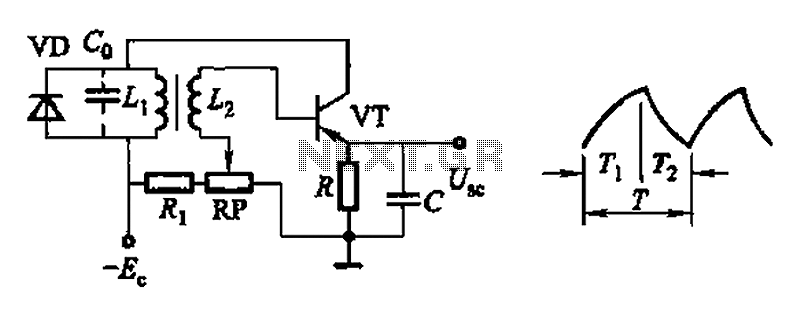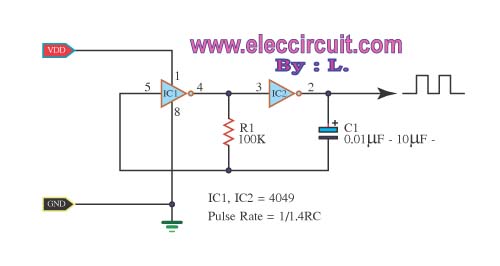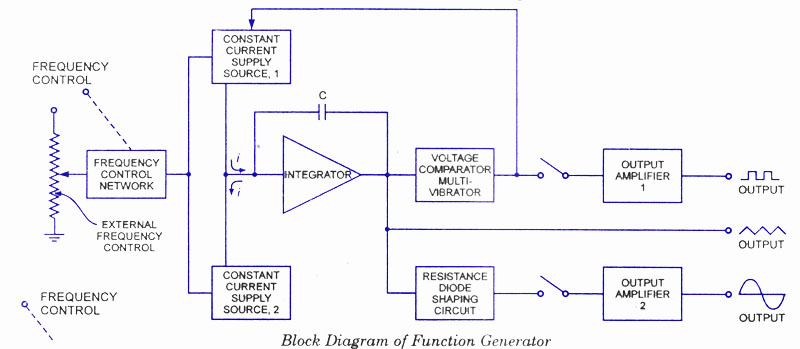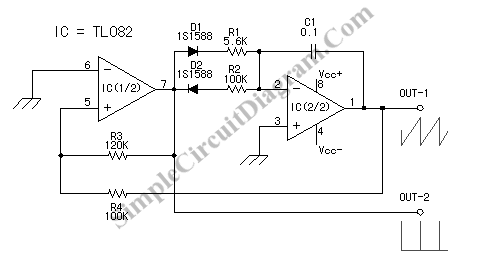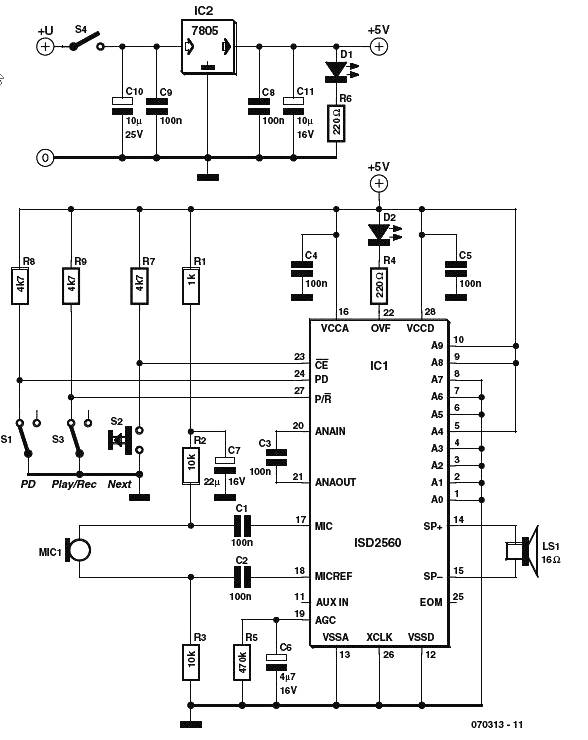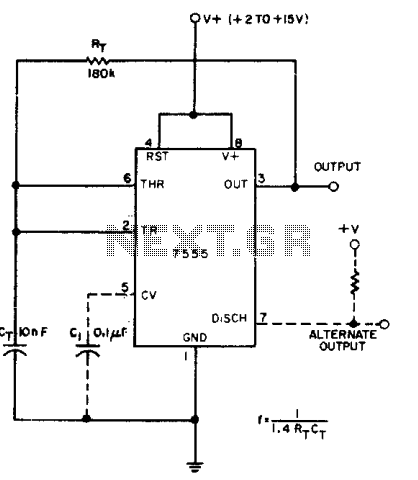
100khz square wave generator
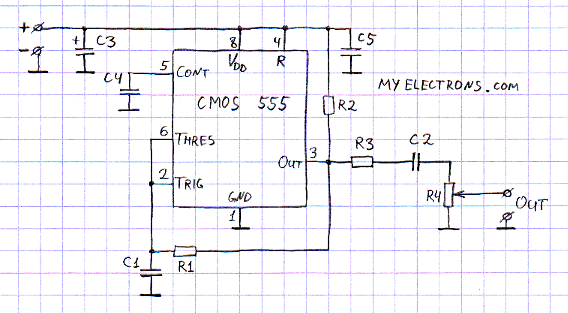
The form of a musical signal never resembles a square wave. The frequency range perceived by an average adult rarely exceeds 17 kHz. Therefore, the appropriateness of testing audio amplifiers with a 100 kHz square wave signal is often debated. However, testing an audio amplifier with a 100 kHz square wave can reveal significant technical qualities or deficiencies in its design. Overshoots caused by negative feedback loops or signal slopes created by input/Miller capacitances are more easily observed with a square wave than with sound-frequency test signals. Initial attempts to use various oscillators, including old Soviet models (561-7, 561-2), 74HC04, and 74HCT04, as well as the LM555, resulted in failures due to excessive ringing at the outputs and problematic current spikes in the power line. Consequently, two budget solutions were developed. While microcontroller-based solutions, such as a universal square wave generator using an ATmega-8, were considered, a preference for a simpler soldering approach prevailed. The goal was to minimize high bandwidth current spikes to ensure a quality test signal for evaluating audio equipment. The generator was designed to provide a test signal well-centered relative to ground, with the option to add a DC shift to assess the performance of the servo-circuitry responsible for maintaining a steady zero DC output. A switch or jumper was incorporated to select between "open" and "closed" outputs. The design was expanded to cover a wider frequency range using a line of DIP switches and additional capacitors and resistors. The completed generator circuit can be powered by four AA batteries or a simple wall adapter, with a strong recommendation to avoid switching power supplies in favor of a traditional low-frequency transformer. Reverse polarity protection was also included in the design.
The audio signal generator is designed to produce square wave test signals suitable for evaluating audio amplifiers. The circuit operates within a frequency range that extends beyond standard audio frequencies, allowing engineers to observe the amplifier's behavior under conditions that may not be encountered during typical audio playback. The inclusion of a square wave signal at 100 kHz serves as a critical test point for identifying overshoot characteristics and other non-linear behaviors that may arise due to the amplifier's feedback mechanisms.
The generator utilizes a CMOS 555 timer in astable mode, which is known for its reliability and ease of use. To enhance the circuit's performance, particular attention is given to minimizing output ringing and power line disturbances. This is achieved through careful component selection and layout, ensuring that the output signal remains clean and stable.
The design incorporates a set of DIP switches, allowing users to select various frequencies as needed. Each frequency setting is achieved by adjusting the timing components—resistors and capacitors—within the 555 timer circuit. This modular approach provides flexibility and adaptability for different testing scenarios.
Power supply considerations are paramount; thus, the circuit is designed to operate effectively with either battery power or a low-frequency transformer-based wall adapter. The recommendation against switching power supplies is based on their potential to introduce noise and high-frequency spikes that could compromise the integrity of the test signals.
Additionally, the inclusion of reverse polarity protection safeguards the circuit against incorrect power supply connections, enhancing reliability during operation. Overall, this audio signal generator represents a practical and efficient solution for audio testing applications, providing engineers with the tools necessary to assess amplifier performance with precision.The musical signal`s form does never resemble a square wave. The frequency range perceived by an average adult hardly goes above 17KHz. Hence I do not give a dime to those heated discussions whether it`s appropriate to test audio amplifiers using a 100KHz meander signal. But being an electronic engineer in my heart as well as by education and pass ion - I can assure you that giving an audio amplifier a try with 100KHz square wave test signal can reveal quite some technical qualities (or lack of those) in the design. Overshots caused by negative feedback loops or signal slopes formed by input/Miller capacitances are amongst things that are easier to observe with meander than when using sound-frequency test signal.
Before turning to the true and tried CMOS 555 I tested several oscillators based on old soviet 561 › 7, 561 › 2, as well as 74HC04 and 74HCT04; the last unsuccessful attempt was made using LM555. All the attempts listed above have failed due to the horrible ringing the chips were generating at its outputs.
The current spikes in the power line were also quite hard to tolerate. Therefore I came up with only two budget solutions: People who love micro-controllers may start laughing at me here. Honestly I was also tempted to build a universal square wave generator based on ATmega-8 that I had at hands.
But somehow I am too lazy to program when the same result can be achieved by a comparable amount of soldering without turning on that annoying thing (computer. And to tell you the truth I strived to have as minimal of those high bandwidth current spikes as possible - in order to test quality audio equipment I wanted to have a quality test signal as well.
Regardless the fact that the generator`s bill of materials amounted for just a few bucks. Obviously testing audio amplifiers with the test signal well centered relative to the ground is very convenient. On the other hand adding DC shift helps to qualify how well the servo-circuitry works - the one that is responsible for assuring the steady zero DC at the output.
Thus having a choice between "open" and "closed" output was a good thing to build in the test signal`s generator: just install a switch or a "jumper" that would short C2. Once I heated up my soldering iron I did not want to stop with a single 100KHz frequency. By adding a simple line of DIP-switches and few extra capacitors and resistors we are able to cover pretty wide frequency range.
The finished generator circuit can be fed from 4 AA batteries or a simple wall-brick. I strongly suggest you staying away from switching power supplies here and use an old good low frequency transformer. Since I like good CMOS 555 a lot - I added the reverse polarity protection to this design. 🔗 External reference
The audio signal generator is designed to produce square wave test signals suitable for evaluating audio amplifiers. The circuit operates within a frequency range that extends beyond standard audio frequencies, allowing engineers to observe the amplifier's behavior under conditions that may not be encountered during typical audio playback. The inclusion of a square wave signal at 100 kHz serves as a critical test point for identifying overshoot characteristics and other non-linear behaviors that may arise due to the amplifier's feedback mechanisms.
The generator utilizes a CMOS 555 timer in astable mode, which is known for its reliability and ease of use. To enhance the circuit's performance, particular attention is given to minimizing output ringing and power line disturbances. This is achieved through careful component selection and layout, ensuring that the output signal remains clean and stable.
The design incorporates a set of DIP switches, allowing users to select various frequencies as needed. Each frequency setting is achieved by adjusting the timing components—resistors and capacitors—within the 555 timer circuit. This modular approach provides flexibility and adaptability for different testing scenarios.
Power supply considerations are paramount; thus, the circuit is designed to operate effectively with either battery power or a low-frequency transformer-based wall adapter. The recommendation against switching power supplies is based on their potential to introduce noise and high-frequency spikes that could compromise the integrity of the test signals.
Additionally, the inclusion of reverse polarity protection safeguards the circuit against incorrect power supply connections, enhancing reliability during operation. Overall, this audio signal generator represents a practical and efficient solution for audio testing applications, providing engineers with the tools necessary to assess amplifier performance with precision.The musical signal`s form does never resemble a square wave. The frequency range perceived by an average adult hardly goes above 17KHz. Hence I do not give a dime to those heated discussions whether it`s appropriate to test audio amplifiers using a 100KHz meander signal. But being an electronic engineer in my heart as well as by education and pass ion - I can assure you that giving an audio amplifier a try with 100KHz square wave test signal can reveal quite some technical qualities (or lack of those) in the design. Overshots caused by negative feedback loops or signal slopes formed by input/Miller capacitances are amongst things that are easier to observe with meander than when using sound-frequency test signal.
Before turning to the true and tried CMOS 555 I tested several oscillators based on old soviet 561 › 7, 561 › 2, as well as 74HC04 and 74HCT04; the last unsuccessful attempt was made using LM555. All the attempts listed above have failed due to the horrible ringing the chips were generating at its outputs.
The current spikes in the power line were also quite hard to tolerate. Therefore I came up with only two budget solutions: People who love micro-controllers may start laughing at me here. Honestly I was also tempted to build a universal square wave generator based on ATmega-8 that I had at hands.
But somehow I am too lazy to program when the same result can be achieved by a comparable amount of soldering without turning on that annoying thing (computer. And to tell you the truth I strived to have as minimal of those high bandwidth current spikes as possible - in order to test quality audio equipment I wanted to have a quality test signal as well.
Regardless the fact that the generator`s bill of materials amounted for just a few bucks. Obviously testing audio amplifiers with the test signal well centered relative to the ground is very convenient. On the other hand adding DC shift helps to qualify how well the servo-circuitry works - the one that is responsible for assuring the steady zero DC at the output.
Thus having a choice between "open" and "closed" output was a good thing to build in the test signal`s generator: just install a switch or a "jumper" that would short C2. Once I heated up my soldering iron I did not want to stop with a single 100KHz frequency. By adding a simple line of DIP-switches and few extra capacitors and resistors we are able to cover pretty wide frequency range.
The finished generator circuit can be fed from 4 AA batteries or a simple wall-brick. I strongly suggest you staying away from switching power supplies here and use an old good low frequency transformer. Since I like good CMOS 555 a lot - I added the reverse polarity protection to this design. 🔗 External reference
